How to Run a D&D Horror Game
Whether it’s a spooky game for October, a one-shot horror game for the sake of it, or a whole horror-themed campaign, you can make a pretty good horror campaign for Dungeons & Dragons using only the rules as written. That is to say, using just the elements already found in the core rulebooks, it takes only a little effort to transform the game’s default high fantasy feel into something closer to the horror genre. In this article, I present advice on how to do just that. The advice here doesn’t focus on any particular edition of D&D. In fact, since we aren’t really changing rules, the information you find here should prove useful, whatever version of the D&D game you prefer.
Consent and Player Buy-in
When planning a horror campaign, it’s particularly important as a GM that you make sure all your players are on board with the sort of game you have in mind. Horror is a very broad genre that can include everything from the creepy castles of the gothic novel to the blood-and-guts violence of the slasher film. As you plan your game and think about the horror elements you want to include, you should also communicate those choices to the players. Not everyone is necessarily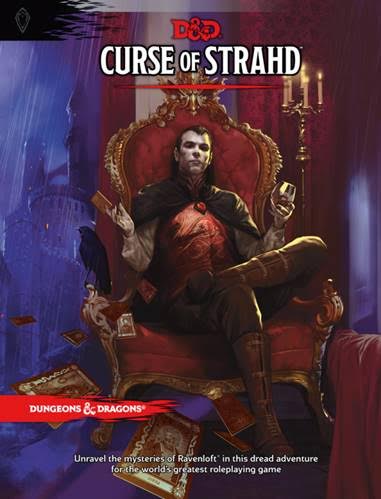 going to be on board for every type of game. A “session zero” where you get everyone together and discuss the campaign ahead of time is a good way to set expectations before your game begins in earnest.
going to be on board for every type of game. A “session zero” where you get everyone together and discuss the campaign ahead of time is a good way to set expectations before your game begins in earnest.
Clear communication with your players is also important for another reason. If you’re going to run an effective horror game, you’ll need a strong level of buy-in from your players. You’ll want to make sure everyone’s characters fit the theme. Imagine you’re planning a gritty zombie survival game and one player shows up with a sarcastic artificer with an arm blade and a homemade “boomstick” shotgun. Suddenly, your Walking Dead game has turned into Army of Darkness. Which sounds like a lot of fun…if that’s the kind of game everyone is expecting.
A session zero can help make sure no one’s game choices accidently detract from the campaign.
Change Reality…
D&D operates according to a set of game rules. Those rules act as a sort of reality for the game world. As players learn the rules, they come to expect certain truths about the setting to hold up across adventures. Kobolds are weaker than orcs, and orcs are weaker than giants. Fire harms trolls, blue dragons have lighting breath, and so on.
In a horror game, you’re going to need to subvert some of those expectations. Your goal is to “change reality” in ways that make your game function a little less like a heroic adventure and a little more like a horror story. We’ll explore some ways you might do that below.
…But Keep Player Agency in Mind
A big part of the fun of D&D for a lot of players is the freedom they experience within the game’s reality. A player should have a reasonable idea of the powers  and limitations of both her character and her adversaries. When you change reality, do so sparingly. Save things like surprise monster immunities, changes to how spell works, and other rules alterations for major encounters and important villains. And don’t just take away a player’s agency entirely. Instead, give them a new option or new approach that requires them to engage with the story in creative ways.
and limitations of both her character and her adversaries. When you change reality, do so sparingly. Save things like surprise monster immunities, changes to how spell works, and other rules alterations for major encounters and important villains. And don’t just take away a player’s agency entirely. Instead, give them a new option or new approach that requires them to engage with the story in creative ways.
Built-in Horror
D&D already contains many of the elements of a good horror story, right out the box. Most adventures take place in a world where the supernatural is a real and tangible force. You’ve got a whole Monster Manual of potential antagonists for the player characters to face. Here are some of the horror elements already present in D&D and tips on making them more an even better fit for the genre.
Monsters: The Monster Manual gives stats for classic movie monsters like vampires, werewolves, and mummies. If you prefer a more Lovecraftian feel, consider mind flayers, gibbering mouthers, or aboleths. All manner of undead, from ghosts to zombies, work well for horror adventures. Cultists, demons, giant spiders, and more have all appeared in horror stories at one time or another. You’ve got a lot of options!
Don’t be afraid to change reality and alter how a monster works. This could be as simple as changing a vampire’s vulnerabilities to make it a more unique and memorable adversary. Or, you can keep a monster the same, but alter the creature’s behavior in a supernatural way. Perhaps an otherwise mundane animal is now incredibly hostile due to some supernatural influence (as in Alfred Hitchcock’s The Birds or Stephen King’s Cujo).
Alternatively, consider using a monster as-is, but in a way that emphasizes the horror themes already present in its nature or abilities. The doppelganger, for example, is a fairly common D&D monster with a lot of terror potential. What about a doppelganger serial killer who assumes the form of its victim? To casual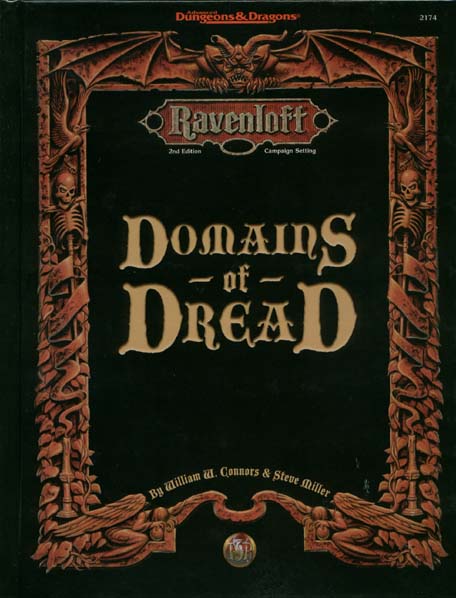 acquaintances, everything about the person seems the same. However, to those who know the victim best, something about their friend seems…off.
acquaintances, everything about the person seems the same. However, to those who know the victim best, something about their friend seems…off.
Magic: You can use magic as a narrative device to justify all kinds of terrifying plots. A possessed object that brings ill luck to an entire family. A series of murders at an isolated inn that leaves a psychic “echo,” threatening the sanity of anyone who dares spend the night there. A tear in the fabric of reality that infects the local goblins with an insatiable hunger for flesh! All of this can be explained as magic, and magic is already part of D&D.
Remember, though, to keep players’ agency in mind. D&D magic is a reliable and quantifiable force. Unlike monsters, it’s likely to be directly in the hands of one or more PCs. From the point of view of a wizard, warlock, or other spellcaster player, magic is a defined bit of game rules. Thus, be especially careful before you make a change affecting a character’s spells or magical abilities. Don’t just take things away from them. Give them an alternative that’s related to the adventure or overall plot.
Castles, Dungeons, and the Wilderness: These common D&D adventuring locations also make great horror backdrops. Castles are a staple of the gothic novel, and the original Ravenloft adventure made a whole dungeon out of a big, spooky castle. And, speaking of dungeons, underground spaces full of crawling insects, cloying shadows, and unknown dangers make for great horror. Even the wilderness works as a horror setting, juxtaposing as it does the vast hazardous spaces of the wild with the potential claustrophobia of the dark forest. And who knows exactly who, or what, watches you from behind those trees.
Additional Horror Elements
Here are a few additional concepts to keep in mind as you write and run your horror game. Don’t try to incorporate all of these tropes every time. Instead, sprinkle them in as you can to help maintain the proper horror feel at your table.
Fear: Creating an actual experience of fear at the game table isn’t easy. When you’re playing D&D, you’re rolling dice with your friends. You’re probably at 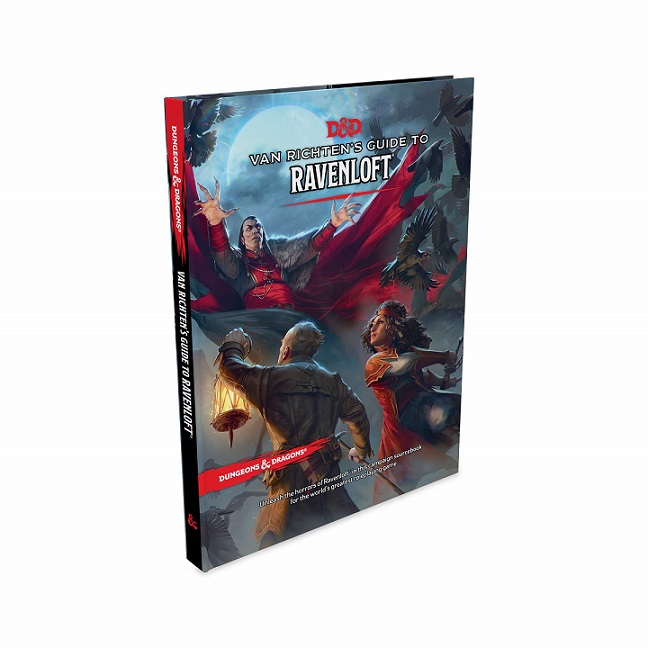 someone’s house or at your friendly local game store. None of that is exactly compatible with legitimate terror. And, if we’re being honest, true terror is probably not a desirable outcome most of the time.
someone’s house or at your friendly local game store. None of that is exactly compatible with legitimate terror. And, if we’re being honest, true terror is probably not a desirable outcome most of the time.
Spooky, on the other hand, is an achievable emotion in a D&D game. Spooky is less about being actively afraid and more a sense of dread or unease. When possible, add a few creepy elements to your adventures. Give an NPC a somber way of speaking. Use your descriptions of the environment to emphasize the sheer heights of the looming castle walls, the unsettling shadows lurking between the trees, and the weird sounds just beyond the light of the campfire.
If you aim for fear and hit spooky, you’re doing okay.
Isolation: Creating a feeling of isolation builds a sense of unease in your players. Horror movies and novels do this all the time to create similar feelings in the reader. At the beginning of Dracula, Jonathan Harker slowly realizes that he’s trapped in the Count’s very dangerous castle. In Alien, the crew of the Nostromo are trapped in a spaceship with the killer xenomorph.
Isolation in D&D can take the form of physical distance, such as a remote dungeon on the fringes of society. It can also mean social isolation, like when the mayor refuses to believe that half the town has been infected with lycanthropy.
Imagination: D&D has one big advantage over other forms of horror entertainment: the game takes place almost entirely in the players’ imaginations. And the imagination is where most of the heavy lifting happens when it comes to creating fear. When all else fails, simply focusing on the horror tropes and then letting your player’s imagination fill in the blanks really can work. A simple vampire, even a highly clichéd Dracula knock-off, can make for a very effective D&D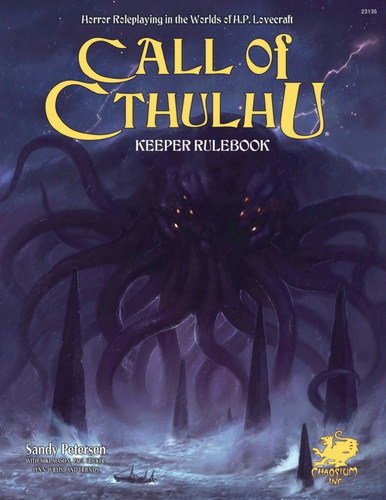 campaign (see Curse of Strahd, the Ravenloft Campaign Setting, or any of these).
campaign (see Curse of Strahd, the Ravenloft Campaign Setting, or any of these).
Humor and Respite: Don’t be afraid to let a little humor in to break the tension. Your horror game won’t work if its all stress, fear, and terror all the time. Add in moments of levity between scary moments. Give your players temporary areas of safety. Let the characters relax from time to time…and then spring a monster on them!
Setting the Scene: The Game Table
Finally, it’s worth giving some thought to the actual physical space where you’re running your game. Extermal distractions are the enemy of player immersion. If possible, choose a play space that allows you to reduce things that might take away from you and your players’ focus on the game. If you have access to a truly spooky location, by all means go for it! But even if you don’t, at least give some consideration to where you’re playing. A basement is a better choice than a brightly lit living room. The study room at an old library works better than a sterile community center.
Props: A few inexpensive Halloween decorations placed strategically on the game table or on the walls of your play space can really set the mood. Aim for anything with an appropriately medieval feel, like cauldrons, skulls, and gothic candleholders. Use your imagination and try to find things that don’t distract from the game, but instead blend into the background and set the mood.
Lighting: The lighting in a room can have a subtle but meaningful effect on the overall mood of your game. Consider dimming any overhead lights and maybe lighting a few candles. If fire safety is a concern, or you’re playing in a public space that doesn’t allow burning candles, battery-powered candles offer a great alternative.
Music: Like lighting, music can really help set a spookier tone for your horror game. Use portable speakers if you’ve got them, but just a smart phone streaming a 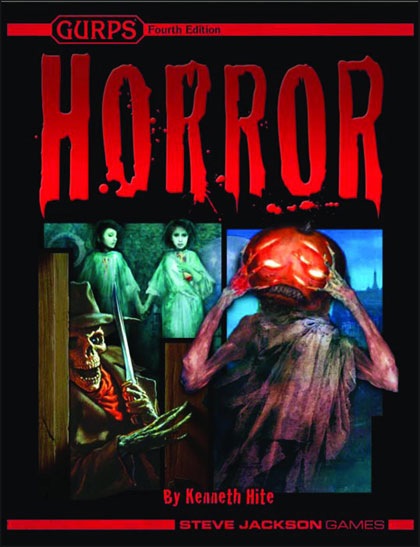 mix of thematic music works fine. As to the music itself, you might consider using an actual horror movie soundtrack, a mix of appropriately melancholy classical music, or even a collection of atmospheric nature sounds like blowing wind or thunderstorms.
mix of thematic music works fine. As to the music itself, you might consider using an actual horror movie soundtrack, a mix of appropriately melancholy classical music, or even a collection of atmospheric nature sounds like blowing wind or thunderstorms.
Remember, you don’t have to go all out with a fog machine and elaborate props. Your main goal is to help your players suspend their disbelief and stay engaged with you game as much as possible. A little can go a long way!
Useful Game Resources
The following are my top 5 recommended products for a GM looking to run a horror-themed campaign in D&D.
Curse of Strahd: One of the most popular published 5E adventures, Curse of Strahd is a ready-made horror adventure that will keep your players deep in the murky waters of gothic horror for many sessions.
Ravenloft: The AD&D adventure that spawned not only Curse of Strahd but a whole campaign setting. If you’re looking for a shorter experience than a whole campaign, you could run this adventure that takes place mostly in the confines of Castle Ravenloft. Some conversion required if you’re not running AD&D.
Domains of Dread / Van Richten’s Guide to Ravenloft: Full disclosure, a lot of the advice I give above is distilled from these two books. Domains of Dread is the setting book for the Ravenloft Campaign Setting written for AD&D 2E. It’s heavier on setting information than on actual game mechanics, so it’s pretty useful regardless of which D&D you prefer. Van Richten’s Guide occupies a similar niche, but from a 5E point-of-view. Both books offer good advice for running a horror D&D game. Grab whichever most appeals to you.
Sandy Petersen’s Cthulhu Mythos (5E): If you’d like to add a dash (or a whole lot more than a dash) of Cthulhu to your D&D 5E game, this is a great book to help you. Sandy Petersen is one of the designers behind the Call of Cthulhu roleplaying game, as well as a bunch of other Lovecraftian games. In this book, he applies that specialized (forbidden) knowledge to give you monsters, rules, and lore of a Cthulhu nature to your game.
Heroes of Horror: This 3.5 book is a little too mechanics-heavy to recommend it as a must-have. If you’re running D&D 3.5, it’s a no-brainer. If you’re not, consider picking it up for its advice on horror games and for mechanics you might be able to hack into your version of D&D.
Honorable Mention – GURPS Horror: Nobody does system-agnostic books better than Steve Jackson Games. This book is written for the GURPS system, so the mechanics aren’t going to help you as a D&D GM. But make no mistake, the book is chocked full of generic information about horror as a genre, written with gamers in mind. The GURPS books are basically the “For Dummies” books of the RPG world. Worth picking up!
